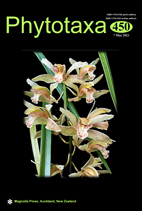Abstract
This study aimed to assess the diversity of species in the Espinhaço Range (ER), eastern Brazil, using as a model the diverse plant family Gentianaceae and focusing on the Parque Municipal de Mucugê—Projeto Sempre Viva (PMM), a conservation unit with predominance of “campo rupestre”. For this purpose, fieldwork expeditions were carried out between the years 2016–2018 along with a survey of species of this family recorded for this conservation unit in public databases. For comparative purposes, the listing of species from other five areas of the ER were also surveyed and we modeled the distribution of species endemic to these mountains, taking into account that they have their restrict distribution, high habitat specificity and importance to the ecosystem. The results indicated the presence of 33 species of Gentianaceae for the ER, eight of them occurring in the PMM. Comparatively, the results pointed to a greater floristic similarity between the PMM, Pico das Almas and Catolés, due to the presence of seven common species. Predictive distribution modeling supports high endemicity of the analyzed species, given their low environmental suitability outside the ER. The models also allowed us to identify possible areas showing high Wallacean shortfall for these species. Thus, the results reinforce the importance of field work, access to physical and digital botanical collections and the integrated use of tools for a more reliable survey of biodiversity.

